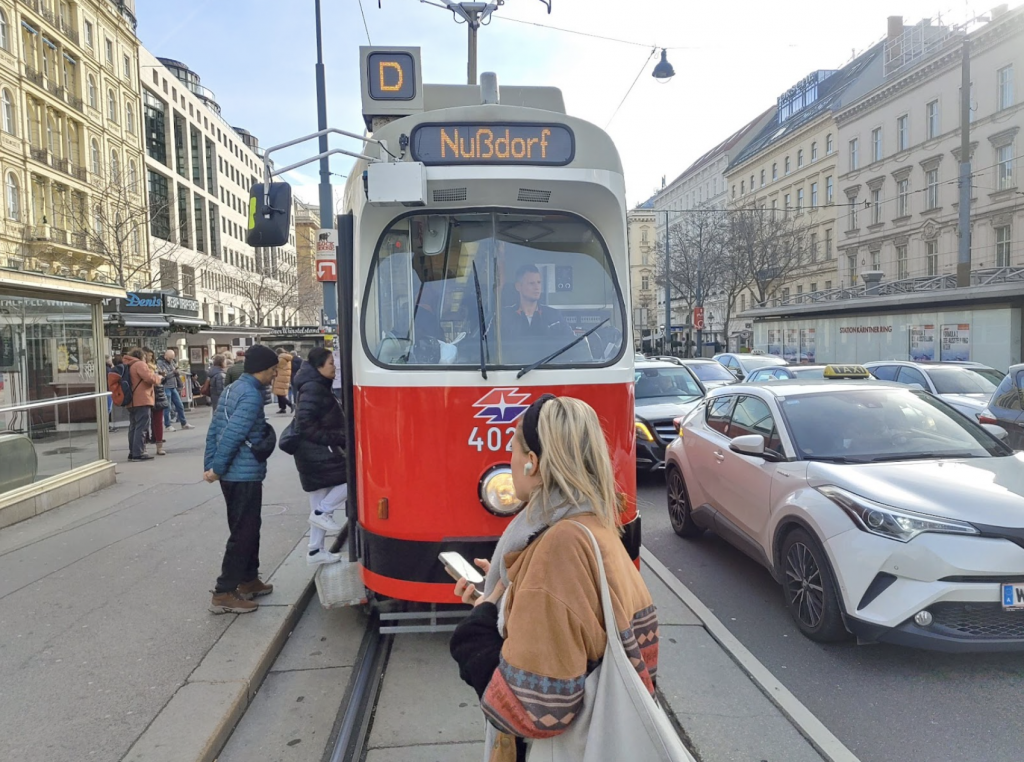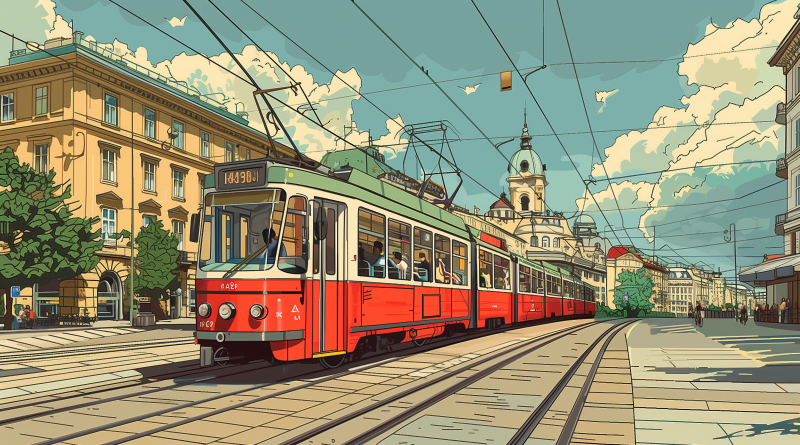Happy Birthday, QLINE. It’s Time For An Extension.
Today, the QLINE celebrates its seven-year anniversary. There’s no excuse for it to not grow, writes Michigan émigré Patrick Maynard in this guest editorial from Berlin:
Vienna, like Detroit, is a city that has long ridden on the success of fossil fuels. The headquarters of OPEC is located there, and the city’s hinterlands are dotted with hydrocarbon wells. The Austrian capital has often seen its fortunes rise and fall in tandem with what oil purchases– and, relatedly, automobile sales- have done on the global markets.
But as I saw during a Viennese visit earlier this year, that’s where the similarities end. While leaders in Michigan, where I was born, have taken their role as an automotive state to heart, using it as their sole badge of identity and stoutly refusing to build any rail transit beyond two token lines in Detroit that don’t even directly connect. It’s the infrastructure equivalent of being that kid in your third grade class who was obsessed with his uncle’s sheep, or what have you, and wouldn’t talk about anything else.
Austrian leaders have taken a different path, building out a Vienna system that has five subway lines, 30 tram routes and is still growing. This is notable for a city with a long history of economic reliance on automobiles and fossil fuels. Let’s also compare to Detroit: For as much as people say that Detroit is the Motor City, so why would it have public transit, the city had quite an expansive transit system until it was dismantled beginning in the 1950s. Vienna, in comparison, began development of its mass transit system far later than the average European or American city– beginning construction of its subway in the 1970s, compared to Berlin’s U-Bahn, which opened in 1902, Paris Metro in 1900, and a primitive iteration of the London Underground as early as the 1860s.

Houston, the American oil capital, which similarly has a nominal reason or two to discourage transit, has built three light rail lines in the past twenty years, with more more planned. And my adopted hometown of Berlin, the capital of a country with one of the world’s most famous auto industries, has the best rail transit on the planet, according to Time Out.
In other words, there’s no copout left for Michiganders to use: If the state is to truly reverse its population decline in any meaningful way, Michigan’s decision makers need to facilitate the extension of the QLine into the suburbs, as was originally planned, and it needs to happen soon.
The state’s own commission on population loss came to essentially the same conclusion. One of the key findings of the panel was that “rapid transit is a big, big, big, big, giant game changer for young people,” as a co-chair of the group confided to the Detroit Free Press in December. “Young people don’t want to drive. They don’t want driver’s licenses, and they’re going to places that have rapid transit.”
Similarly, employers are looking for transit-friendly states when deciding where to locate facilities. A key reason Michigan wasn’t a serious contender for Amazon’s HQ2 hub a few years back was the utter lack of meaningful rail transit — a prerequisite that Amazon officials repeatedly made explicitly clear.
There’s been talk of a rail line from downtown Detroit to the airport. Just to state the obvious: That should happen. But since this is a special day– the seventh birthday for Detroit’s little streetcar- I want to focus on the QLine, which will be a vital piece of any larger transit system.
Envisioning A QLINE Extension
So, with that in mind, what should a QLine extension look like?
Two likely requirements jump out: The extension must be largely grade-separated to allow speed, and it must go far enough into the suburbs to allow workers, shoppers, and commuters to perform useful tasks.
First, let’s discuss those useful tasks. The line thankfully doesn’t have to go as far as you might think. A Michigan company, Meijer, can be our benchmark. In order for a QLine rider to get to a Meijer location, an extension to downtown Ferndale would be more than sufficient, since the megastore has a branch at Woodward Avenue and Eight Mile Road. For what it’s worth, I’d love to see an extension all the way out to Pontiac built in one shot, but a bunch of McMansion dwellers– in the areas near Pontiac, if perhaps not Pontiac itself- getting 100-percent on board with transit is unlikely, whereas Ferndale residents are already heavily invested in the idea of a high quality of urban life and could probably be counted as allies. So Ferndale– or maybe Royal Oak, if we’re feeling ambitious- would be a logical end point for Phase II. (Note that a lot of the Detroit Fantasy Transit Maps ignore 8 Mile as a potential hub in favor of either of these cities for various reasons).

Grade Separation Is Key.
That brings us to speed. Here too, we are lucky: Woodward is wide, and for almost the entire distance from Highland Park to Ferndale, the road contains a median that could easily hold an elevated rail line. Unlike as in downtown (reportedly per Dan Gilbert’s own demands), grade separation makes QLine use genuinely competitive. Imagine sitting in your car at a red light while the train whooshes overhead. That’s a powerful marketing tool.
That leads us to funding.
With the Regional Transit Authority likely to take over the QLine this year, the nonprofit that currently runs the line, M-1 Rail, will want to keep itself relevant, meaning this opportunity is ripe for nonprofit involvement. Deep-pocketed nonprofit funders working on the construction of a second segment with the cooperation of the state mean work could progress faster than it would under a purely government-led effort. After that stage is wrapped up, the nonprofit can initially subsidize extension of RTA service onto the new line, with the RTA fully picking up the service a few years later, once the bugs have been worked out. Heck, as someone who was born in Michigan, I’d happily donate some money to M-1 Rail if they were to come to me with this type of proposal. I know others would too.
Detroit’s biggest downtown booster, Quicken Loans founder Dan Gilbert, has said that in order to get a system that would lead to “a different city,” regional governments must be involved. I agree, but I would throw the ball partially back to Gilbert and his pals: The only time in the last three decades that new rail was built in Detroit, the project was initiated by a private nonprofit– with a big funding commitment from, well, Mr. Gilbert! With the specter of segregationist L. Brooks Patterson’s daughter possibly reinstating family control of Detroit’s wealthiest suburban county, waiting for every regional government to be deliriously enthusiastic before making a move with private money would be a grave mistake, as that full buy-in may simply never happen.
Regardless of where things seem to be going in the future, policy decisions can be influenced now via individual donation of time and money to groups like Transportation Riders United and Trains Not Lanes.
Some will, inevitably, wring their hands and claim that nothing can be done in a state tied to autos and oil. As Vienna, Berlin and Houston have shown, however, the problem is not a presence of industry: It’s a lack of ambition. And once things get moving, that’s a surprisingly easy problem to solve.
Patrick Maynard is a former Michigander whose freelance writing has appeared in outlets including The Philadelphia Inquirer, The Detroit Metro Times and The Independent. This essay was written from Vienna and Berlin. The Handbuilt City accepts solicitations for proposed editorials and other articles. Get in touch!




